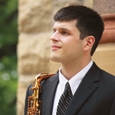
Improvisation is one of the most difficult pedagogical areas to teach. Students are entirely accustomed to reading notated music, which gives them pitches, rhythm, and expression. The sudden removal of this much structure can be paralyzing. In addition, students are frequently overwhelmed by the perceived limitless possibilities of harmonic and rhythmic choices now available to them, and this is usually coupled by a limited or nonexistent jazz vocabulary. All these factors cause students to struggle.
Frequently, the first step of improvisation is teaching students how to read chord changes. Mastering this step takes a basic, fundamental knowledge of all twelve major scales. Beginning with major, and moving to dominant, dorian, half diminished, and then fully diminished, most educators establish both the scale and arpeggio pattern of each type of chord found in a particular form or solo section. This is a wise choice for developing the basic skills of reading the chord changes in real time, and is not to be omitted.
The problem at this point is that the resultant solos are based solely on arpeggios. Additionally, it is typical for beginning improvisers to cling to the root. The result is each measure of the phrase sounding with the root in the solo voice, comping instruments (sometimes both piano and guitar), and the bass voice. Too much root results in an uninteresting and predictable improvisatory passage.
A simple way to expand both the aesthetic and theoretical knowledge and abilities of the improviser is to introduce the concept of the arpeggio using the upper structure, which means starting arpeggios on the third instead of the root. In this instance we now get the third, fifth, seventh, and ninth, rather than the typical 1-3-5-7 pattern to which many are so accustomed. The immediate benefit of arpeggiating chord changes this way is that the third is highlighted. Performers learning arpeggios this way will be demonstrating the chord quality right away. When an arpeggio starts on the root, the initial sound does not give away the chord’s function.
A second benefit of upper structure arpeggios is the incorporation of the additional altered tones above the root, including the ninth, eleventh, and thirteenth. All too frequently, these extensions to the chord are omitted in the initial stages of chord change reading, but it is these pitches that set a chord apart from a generic dominant or dorian sound that exists at other times in the form. Depending on the number of these extensions, the arpeggio can begin on the fifth or seventh to incorporate all necessary pitches in the exercise. This will help students grasp the importance of these tones, and lead to them including these pitches during improvisation.
If students begin improvised phrases on something other than the root and use the notes that distinguish extended chords from their similar but more generic dominant, major and, dorian versions, their solos will sound mature and seasoned instead of predictable.






